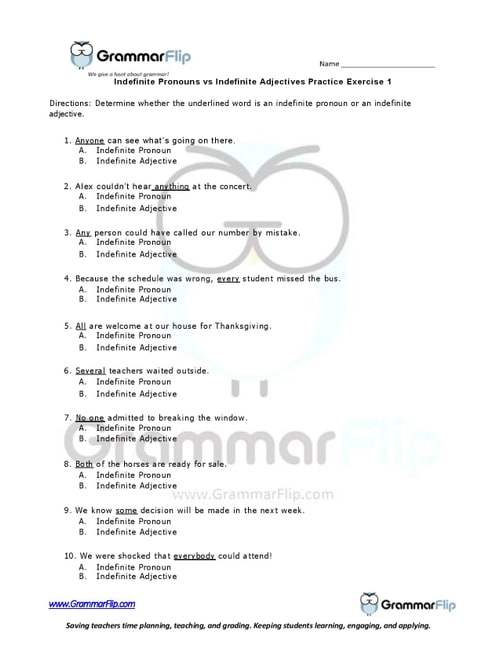What is an Indefinite Pronoun?
An indefinite pronoun replaces a noun and refers to non-specific people, places, or things.
Some examples of indefinite pronouns would be the following:
Everybody passed last week’s test with flying colors.
I need someone to water my plants while I am traveling.
Nobody volunteered to change the baby’s diaper.
Long-Form Video: Indefinite Pronouns
Long-form instructional video lessons allow students to engage with grammar concepts in more depth and detail.
This format provides students with a stronger foundation and a more comprehensive understanding of indefinite pronouns.
Why You Should Use Indefinite Pronouns in Your Writing
Using indefinite pronouns in your writing adds generality and ambiguity which can both be helpful at times.
If you want to write with generality rather than with specificity, indefinite pronouns like “someone,” “anyone,” “everyone,” and “nobody” allow you to make broad statements.
Everyone sure would enjoy a sip of water in this heat.
Nobody needs that added to their homework list.
Writing with ambiguity can be effective as well when you don’t want to point out a specific individual or event.
Somebody left their trash on the floor.
Could someone give me a hand with this?
Be sure not to confuse indefinite pronouns with indefinite adjectives which are slightly different!
Download a Free Worksheet on Indefinite Pronouns!
Click the image below to download your free worksheet on indefinite pronouns!

Need a grammar program that provides the instruction and grading for you?
Explore More GrammarFlip Lessons!
Parts of Speech lessons provide the building blocks of grammar. GrammarFlip covers these topics in detail to ensure a solid foundation is built. First time learners and students seeking to review the parts of speech can both benefit from the instructional videos and slide show reviews.
Parts of the Sentence lessons are critical for understanding how the parts of speech function in language construction. From the basic to the advanced, these lessons will cover a wide range of grammar topics that can be used in any grade level or classroom.
Mechanics and Usage lessons equip students with the necessary skills to communicate clearly to all audiences. With a focus on the application of these concepts in student writing, these lessons tie together both simple constructions of grammar as well as the more complex such that any age or skill level of student will benefit.

